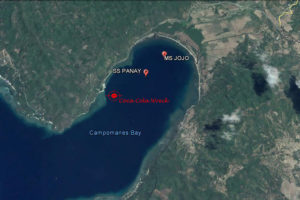Open questions …
There are still many questions and thoughts that concern me about the wreck of the SS Panay. Maybe some of you have some answers or even observations on the wreck. You can also write in the Logbook of Panay or write me directly.
The SS Panay was cleaned several times after World War II by military divers for dangerous warfare agents. This is the official version. "Plundered" is more the right word. The real interest was probably more worth the scrap iron.
Apart from the freight and the gas masks, there are still a few other things missing.
The SS Panay had three heavy "Bower Hall" anchors on board with a gross weight of 5700kg and 440m anchor chain with a weight of 21800 Kg
Plus the heavy "Clark & Chapman" windlass and the two crane winches.
That's just over 30 tons of bare iron. They certainly have not rusted away.
Now the first thought. Where is the third anchor ??? Is it still on board ???
The third anchor was not mounted at the rear; it served as a replacement anchor and was usually stored because of the high weight in the bottom of the hull, so as not to hamper the daily operation but remain close to the front crane. The most likely position is somewhere down at the bottom near the big hatch, so keep your eyes open.
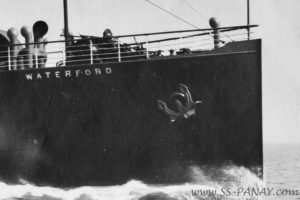
The second big question: "what about the engine?”
A wreck’s engine room always attracts attention.. Especially if you have knowledge of what lies dormant. Our USS PANAY hides a true rarity.
In the engine room are two extremely rare “four-cylinder quadruple expansion steam engines” by Wigham Richardson.
This machine type was only installed in 80 ships. Our special variant of the machine has a cylinder configuration of 16, 23, 33 & 48 x 33 ins. was the smallest and only built exactly two times. Both engines are located in the SS PANAY.
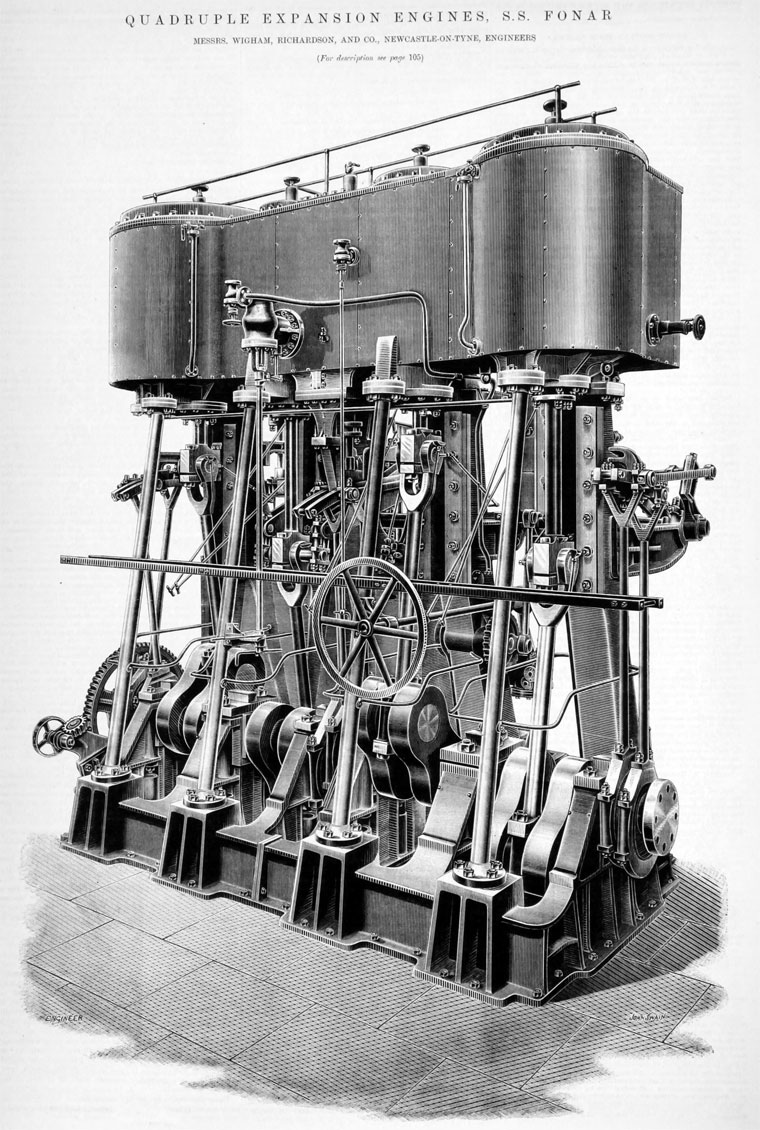
QUADRUPLE EXPANSION MARINE ENGINES. ON page 102 we illustrate 1\Iessrs. Wigba.m, Richardson , a.nd Co.’s four crank quadruple expa.nsion engines, of which a good dea.l has lately been heard in the North. The particular set shown bas been fitted in the steamship Fonar, which was the first of four steamers engined on this principle by the firm. Tho cylinders are 2lin. + 29in. + 42in. + 60in. x 42in., and indicato about 1500-H.P. The proportions adopted for tho cylinders of the other steamers are slightly different. This firm hM been engaged upon engines of this type for some five years, and about three and a-half years ago tho first were sent to sea. Since that time three moxa steame rs have been fitted with them, and the results of the working of the new type of engine have been in every respect most sa.tisfactory. Besides saving fuel, they have been found to work with extreme regularity and smoothness. But about these interesting points wo hope to say more in another issue, when wo shall give soma figures which we are sw·e will be found interesting and instructive by a. large number of our readers. The firm have other engines of this type of large power in course of con-.truction, and we are informed that this or a. Rimila.t· type of engine is likely to be adopted for some very largo Ame rican steamers. (The Engineer 1893/02/03 )
The picture above shows a slightly older version of the machine from 1893. The difference with the Panay version may only be slight and not obvious to us laymen. So far, the view of the machines has unfortunately been denied me, since the lower deck is not yet accessible in the midship area. However, the decay of the wreck has been progressing rapidly in recent years and there have been increasing gaps and cracks. It will surely only be a matter of time. So keep your eyes open. A photo of the machines would be more than welcome here.
The boilers
Unfortunately, nothing is known about the 4 multitublar steam boilers at the moment, except perhaps the inevitable position relatively precisely under the funnel. Of course, a look from the top into the “stovepipe” does not bring much
Ein Blick von oben ins „Ofenrohr“ bringt natürlich nicht viel.
But also that we are only a matter of time until the main deck and the lower deck are so far open to risk a look. The most likely boiler variant is this, which can be seen in the picture. Hauptdeck und das Unterdeck soweit offen liegen um einen Blick zu riskieren. Die wahrscheinlichste Kesselvariante ist diese, die auf dem Bild zu sehen ist.
At first glance, it may not be identifiable as a boiler due to the angular design and may be more reminiscent of a large rusty cabinet… Dampfkessel zu Identifizieren und erinnert vielleicht eher an einen großen rostigen Schrank.
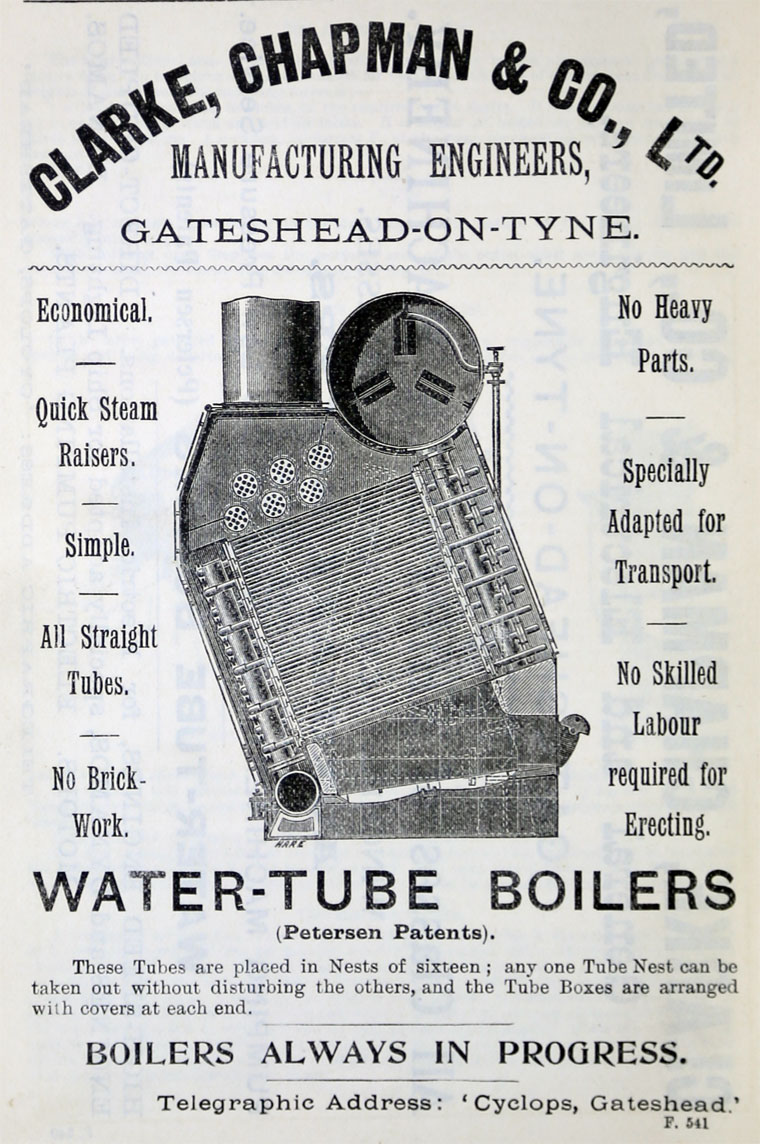
Other cool things…
As already mentioned, the steam-powered windlass and the two crane winches are no longer onboard. But there is another cool “steampunk” technique to discover. In the engine room are also two other smaller steam engines of “Matthew Paul” with Dynamos of “Laurence Scott” for power generation. With 2 x 12 kw power
The steam generator shown below is much larger than the one in the SS Panay, but you still get a good idea of what such a generator looks like.
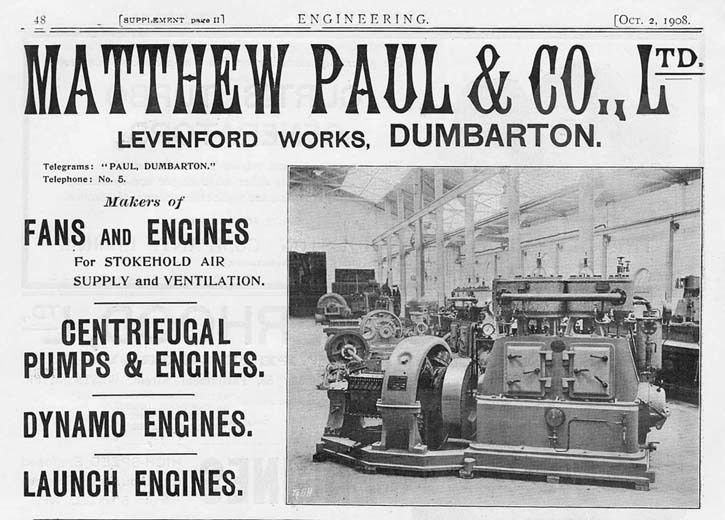
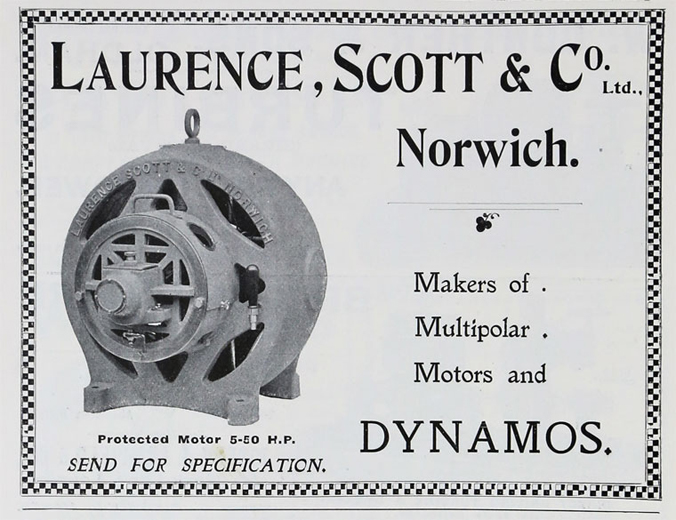
In addition, a steam-powered air compressor from Morray, Workman & co. is aboard. Air compressors have many uses on ships: in steamships, they were used to blow through the boiler and get rid of soot.
So if you discover this device with the eye-catching flywheel, you’ll know what it is.
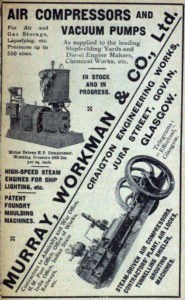
The attentive readers have probably already read in the dive site description that the SS Panay is up to the level of the fender in the sediment. So about 3.5 m deep in the seabed. This means that the engine room is also completely in the ground. Why do I thinkthat the machines are not stuck to the top in the mud?. Very easily…
The engine room and the boiler room are protected on both sides, fore and aft, by the machine room bulkhead. Maschinenraumschott geschützt.
The machine room bulkhead is a very sturdy transverse partition which separates the engine room from the rest of the shipSince the bulkheads in the lower deck have no doors, the engine room can only be reachedvia the main deck above.
The engine room bulkheads are consistently above both decks. So they go from the lower deck through the main deck to the top of the hull. That’s why the middle part of the wreck has not collapsed as much as the rest of the ship. The strong transverse walls still provide resistance and protect the engine room. The engine room is in a kind of huge iron tub, and the only possible access for divers as well as for sand and mud is only from above. Maschinenraum.
Der Maschinenraum befindet sich also in einer Art riesigen schützenden Eisenwanne, und der einzig mögliche Zugang ist für Taucher wie auch für Sand und Schlamm nur von oben möglich.
The photo shows the top view of the wreck in the area of the boiler room; it is easy to recognize the holes in the ground, which already allow a view of the main deck. Kesselraumes, es sind deutlich, schon Löcher im Boden zu erkennen, die bereits einen Blick ins Hauptdeck ermöglichen.
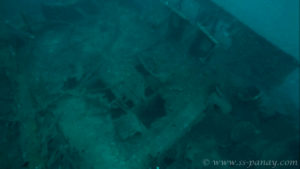
What’s this ?
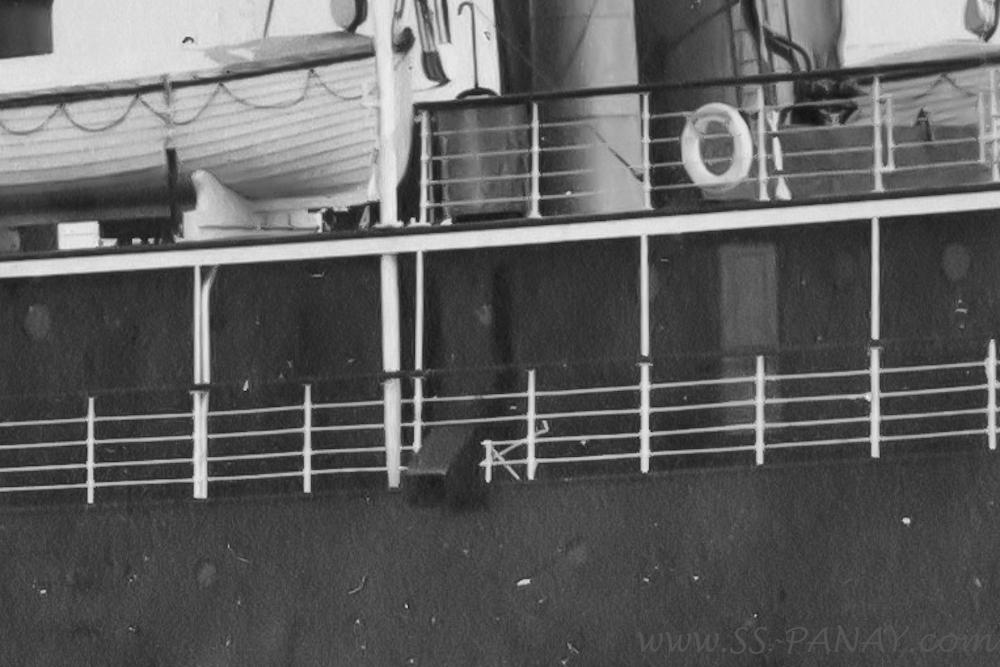
Another question that is still open is more important for me in terms of modeling. If anyone has an answer to what that is, please, out with it!
I mean the big square gutter. It is a bit too big for a drainage channel and it is a strange place for a kind of
garbage chute. This construction also seems to go right through the aisle and then up. The lock in the railing reveals that you could possibly remove it.
Gemeint ist das große Dachrinnenartige etwas, welches da durch die Reling über die Bordwand ragt. Für eine Wasserablaufrinne ist es etwas zu groß und für eine Art Müll rutsche ist es ein eigenartiger Platz. Diese Konstruktion scheint auch direkt durch den Gang und dann nach oben zu gehen.
One is still …
Der Vollständigkeit halber möchte ich an dieser erwähnen, dass es in der Campomanes Bay neben der SS Panay unter der MS Jojo noch ein drittes Wrack gibt.
Das sogenannte Coca Cola Wrack. Es handelt sich dabei, dem Buschfunk zu folge, um ein kleineres zwei mastiges Frachtschiff, welches um 1980 gesunken sein soll. Die Fracht bestehend aus Coca-Cola und San Miguel Flaschen gab dem Wrack den Namen „Coca Cola Wrack“.
Das Coca-Cola Wrack wird auf Grund der Tiefe von über 50m und der wenigen spärlichen Überreste nicht regulär angefahren.
Ich Selbst kenne das Wrack ebenfalls nur von Echolot Bildern, und ich muss, sagen das die wenigen flachen Erhebungen am Grund und die Tiefenangabe von 53 m wenig einladend wirken. Selbst für ein Wrack Enthusiasten wie mich.
Die exakten Koordinaten sind mir leider nicht mehr bekannt. Die Karte zeigt aber die ungefähre Lage.
